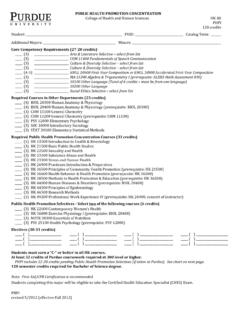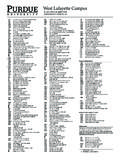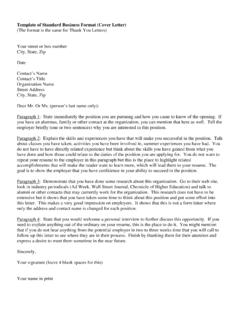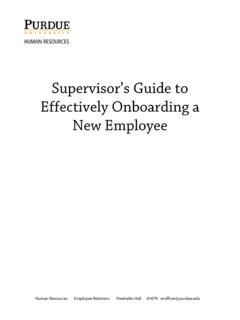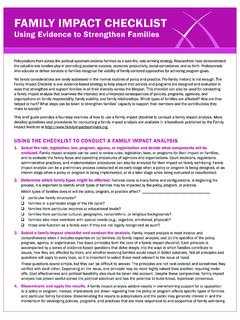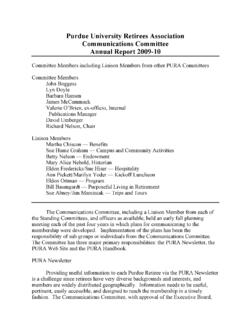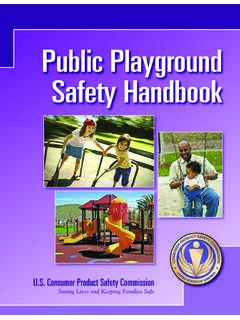Transcription of Electrical Safety Program - Purdue University
1 Electrical Safety Program Adopted January 2014. Revised April 23, 2020. The official version of this document will only be maintained online. The official version of this document will only be maintained online. Electrical Safety Program Table of Contents Table of Contents Chapter 1: Introduction .. 1. Purpose .. 1. Scope .. 1. Definitions .. 1. Responsibilities .. 7. Basic Electrical Safety Principles .. 9. Chapter 2: Training Requirements .. 11. Initial Training .. 11. Electrical Work Normal Operation .. 11. Qualified Electrical Worker Maintenance, Inspection, Troubleshooting, 12. Retraining .. 13. Documenting Training and Experience .. 13. Chapter 3: Electrical Protective Equipment .. 15. General Requirements .. 15. Personal Protective Equipment (PPE) .. 15. Insulating Materials and Tools .. 16. Access Limiting Equipment .. 17. Chapter 4: Identifying Electrical Hazards .. 19. Hazard Identification and Risk Assessment.
2 19. Hazardous Effects of Electricity on the Human Body .. 19. Power Electronic Equipment and Electricity .. 21. Hazards Associated with Power Electronic Equipment .. 21. Chapter 5: Minimizing Electrical 23. Arc Flash Hazard Analysis Implementation .. 23. West Lafayette Campus .. 23. Other Purdue University Properties and Facilities .. 24. Electrical Equipment Labeling .. 24. Chapter 6: Working On or Near Energized Electrical Equipment .. 27. Energized Electrical Work Permits .. 28. Use of Energized Work Permit .. 29. Exemptions to Energized Work Permit .. 29. Approach Distances to Exposed Energized 29. Shock Protection Boundaries .. 29. Arc Flash Protection Boundary .. 30. Chapter 7: Working on De-Energized Electrical Equipment .. 33. Lockout/Tagout Program .. 33. Electrically Safe Condition .. 33. Other Precautions .. 34. Chapter 8: Flexible Cords and Portable Electrical Equipment .. 35. General .. 35. Extension 36.
3 Page i of ii The official version of this document will only be maintained online. Electrical Safety Program Table of Contents Portable Cord-and-Plug Devices .. 38. Lamps .. 38. Wet or Damp Locations .. 38. Chapter 9: Temporary Wiring .. 39. Grounding and Electrical 39. Temporary Flexible cords and Cables .. 39. Chapter 10: Working Space Around Electric Equipment (600 volts, nominal, or less) .. 41. Chapter 11: Access and Entrance to Working Space .. 43. Illumination .. 43. Headroom .. 43. Dedicated Equipment Space .. 43. Chapter 12: Vehicular and Mechanical Equipment .. 45. Elevated Equipment .. 45. Equipment Contact .. 45. Equipment 46. Chapter 13: Miscellaneous .. 47. Research and Development Laboratories .. 47. Contractor Employees .. 47. Appendices .. 49. Appendix A: Regulatory References .. 50. Appendix B: Arc Flash and Shock Hazard Labels .. 51. Appendix C: Hazard Assessment and Energized Electrical Work Permit 52.
4 Appendix C-1: Hazard Assessment for Electrical Work Form .. 56. Appendix C-2: Energized Electrical Work Permit Form .. 57. Appendix D: Hazard Risk Assessment Instructions .. 58. Appendix D-1: Hazard Risk Assessment Form .. 59. Appendix E: Electrical Cord Repair Guidelines for Physical Facilities .. 60. Appendix F: Example Electrical Safety Training 61. Page ii of ii The official version of this document will only be maintained online. Electrical Safety Program Chapter 1: Introduction Chapter 1: Introduction Purpose The Electrical Safety Program (ESP) was created to comply with Electrical systems regulatory requirements to ensure that energized Electrical work at Purdue University facilities is performed safely by qualified Electrical workers who are provided with appropriate safe work procedures, protective equipment, and other controls. It is intended to protect employees against electricity-related hazards. These hazards include Electrical shock and burns; arc flash burns; arc-blast impacts; falls; and other potential Electrical Safety hazards.
5 Working on equipment in a de-energized state is required unless de-energizing introduces an increased hazard or is infeasible ( , voltage testing to troubleshoot). Scope This Program applies to all Purdue University facilities and work performed by its employees regardless of job site location. The Program has been established to ensure the Safety of employees who may work on or near Electrical equipment 600 volts or less. These employees must comply with 29 CFR 1910 Subpart S of the Occupational Safety and Health Administration (OSHA) and National Fire Protection Association (NFPA) 70E 2018 edition. Employees working on voltages higher than 600 volts should comply with the OSHA 29 CFR 1910 Subpart R, specifically 29 CFR (Electric Power Generation, Transmission, and Distribution), and the Institute of Electrical and Electronics Engineers (IEEE) 2007 National Electric Safety Code. All campuses, their agencies, and employees must understand and comply with Safety standards related to Electrical work and follow the uniform practices outlined in this document when engaged in Electrical work.
6 Definitions Arc Flash Hazard. A source of possible injury or damage to health associated with the release of energy caused be an electric arc. (NFPA 70E Art. 100). Arc Flash Rating. The value attributed to materials that describes their performance to exposure to an Electrical arc discharge. The arc rating is expressed in Calories per square centimeter (cal/cm2). (NFPA 70E Art. 100). Authorized Lockout/Tagout Employee. A person who locks or implements a tagout system procedure on machines or equipment to perform the servicing or maintenance on that machine or equipment. An authorized employee and an affected employee may be the same person Page 1 of 62. The official version of this document will only be maintained online. Electrical Safety Program Chapter 1: Introduction when the affected employee's duties also include performing maintenance or service on a machine or equipment, which must be locked out, or a tagout system implemented.
7 ( Purdue LOTO Policy). Boundary. Distance limits for various aspects of Electrical work: 1. Arc Flash Protection Boundary. When an arc flash hazard exists, an approach limit at a distance from an arc source at which an incident energy level of cal/cm2. 2. Shock Boundaries a. Limited Approach Boundary: An approach limit at a distance from an exposed energized Electrical conductor or circuit part within which a shock hazard exists. b. Restricted Approach Boundary: An approach limit at a distance from an exposed energized Electrical conductor or circuit part within which there is an increased risk of shock, due to Electrical arc-over combined with inadvertent movement. (NFPA. 70E Art. 100). Competent person. A person meeting all of the requirements of a qualified person, and, in addition, is responsible for all work activities or Safety procedures related to custom or special equipment, and has detailed knowledge regarding the Electrical hazard exposure, the appropriate controls for mitigating those hazards, and the implementation of those controls.
8 (NFPA 70E Art. 350). De-energized. Free from any Electrical connection to a source of potential difference and from Electrical charge; not having a potential different from that of earth. (NFPA 70E Art. 100). Disconnecting (or Isolating) Switch (Disconnector, Isolator). A mechanical switching device used for isolating a circuit or equipment from a source of power. (NFPA 70E Art. 100). Electrical Infrastructure. Electrical components, including breaker and fuse panels, light switches and fixtures, switchboards, wiring, etc., that facilitate the use and transfer of Electrical energy. ( Purdue University Definition). Electrically Safe Work Condition. A state in which an Electrical conductor or circuit part has been disconnected from energized parts, locked/tagged in accordance with established standards, tested to verify the absence of voltage, and, if necessary, temporarily grounded for personnel protection. (NFPA 70E Art.)
9 100). Electrical Work Normal Operation. Work performed to start up or shut down electric equipment that meets the criteria of Normal Operation in Chapter 6 introduction. This work may be performed by trained individuals who would not be exposed to energized parts or an arc flash hazard and may be of non- Electrical occupations. ( Purdue University Definition). Page 2 of 62. The official version of this document will only be maintained online. Electrical Safety Program Chapter 1: Introduction Examples include operation of circuit breaker, switch, contactor or starter for control of hazardous energy isolation. Electrical Work Maintenance, Inspection, Troubleshooting, Construction. Work performed on Electrical equipment while exposed to energized conductors or circuit parts; interaction with or operation of Electrical equipment where an arc flash hazard is likely or other abnormal conditions are present. The work should only be performed by electrically qualified persons.
10 ( Purdue University Definition). Energized. Electrically connected to or is, a source of voltage. (NFPA 70E Art. 100). Evidence of Impending Failure. Evidence such as arcing, overheating, loose or bound equipment parts, visible damage, or deterioration. (NFPA 70E Art. 130). Exposed Electrical parts. Capable of being inadvertently touched or approached nearer than a safe distance by a person. It is applied to Electrical conductors or circuit parts that are not suitably guarded, isolated, or insulated. (NFPA 70E Art. 100). Fault Current, Available. The largest amount of current capable of being delivered at a point on the system during a short circuit condition. (NFPA 70E Art. 100). Facilities. As used in these regulations, the term " University Facility" or " University Facilities". means any building or structure or any improved or unimproved land, or any part of any such building, structure, or land, which is owned, used, or occupied by Purdue University and where employees may be exposed to occupational hazards.
